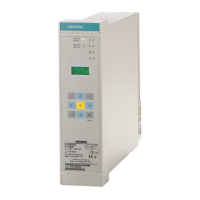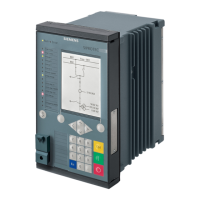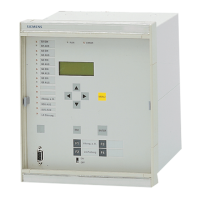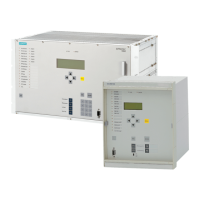•
Selection of the synchronizer (measuring quantities connection, interconnection with the circuit breaker
and selection of the synchronizing functional groups)
•
Start of synchronizing
The synchronism can be started in different ways. An overview can be seen in Figure 2-17.
[sync-startlogik-220403-kn, 1, en_GB]
Figure 2-17
Start logic (illustration for one channel)
The start input
>Sync Start
is to be used with parallel connection. Here a short pulse is sufficient (>100
ms). The information is recorded in the flip-flop and the rest logic is released. Simultaneously, the monitoring
time is started. If this elapses without previous closing, the function is terminated. If a running synchroniza-
tion should be interrupted, the stop input
>Sync Stop
has to be pressed. The stop input is dominant to the
start input. Alternatively synchronization can also be interrupted using the blocking input
>BLOCK Sy1
. The
corresponding indiciation
Sy1 BLOCK
is produced.
The logic described in the individual sections is processed in each procedure separately. The logic shown in
Figure 2-18 uses in time supervision (below right), the same operating mode is monitored - both procedures
must have detected “synchronous switching” or “asynchronous switching” - (upper left) and in the event of
positive conditions both closure commands are issued.
Using the parameter 6001 COM. TESTSYNC. or the binary input
>COM Test sync.
a synchronization test
can be carried out. This synchronization test is started as a normal synchronization. However, the indications
Sync CloseRel 1
and
Sync CloseRel 2
are suppressed, do not press the CLOSE relay BO1 and BO2 and
instead, the indiciations
Test CloseRel 1
and
Test CloseRel 2
are displayed, so long as the
synchronism is successfully established.
Functions
2.2 Paralleling Functions
SIPROTEC 4, 7VE61 and 7VE63, Manual 53
C53000-G1176-C163-3, Edition 10.2017
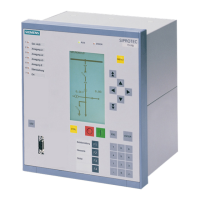
